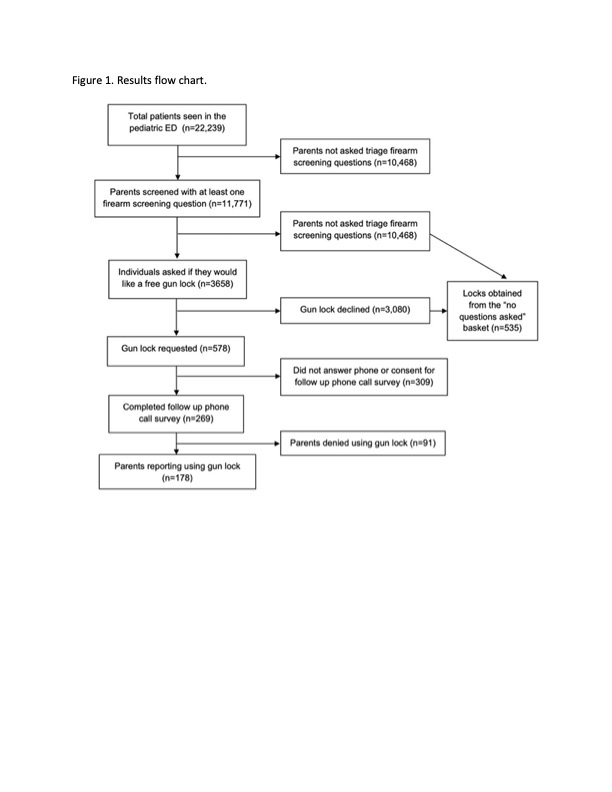Injury Prevention
Injury Prevention 2
317 - Firearm Screening and Gun Lock Distribution in a Pediatric Emergency Department
Publication Number: 317.42

Monica Lim, MD (she/her/hers)
Resident Physician
Washington University in St. Louis School of Medicine
Saint Louis, Missouri, United States
Presenting Author(s)
Background:
Firearm injury is the leading cause of death for children ages 1 to 19 years. The American Academy of Pediatrics (AAP) recommends that firearms should be stored locked and unloaded, with ammunition locked and stored separately, however data shows that adherence with this recommendation is variable.
Objective:
Our aim was to describe firearm access and storage practices among families receiving care in a pediatric emergency department (PED) and to determine whether the distribution of free gun locks, in addition to counseling, altered access and storage practices in our patient population.
Design/Methods: This was a single-center, prospective observational cohort study in an urban, American College of Surgeons (ACS) verified, level 1 trauma center and stand-alone PED with approximately 55,000 annual patient visits. Parents and guardians of pediatric patients presenting for any complaint were asked standardized triage questions related to firearm access and were offered free gun locks and counseling. Individuals who received gun locks were called one to two months after the visit. We collected data on patient’s demographics, parental responses to the triage and follow-up phone survey, and differences of responses between the triage survey and follow-up phone survey and analyzed data using t tests.
Of the 22,239 patients seen in our PED, 11,771 parents were screened with at least one question in the triage firearm-focused survey and included in this study. Access to a firearm was reported in 18% of participants, 14% reported safe storage methods (firearm locked and unloaded), and 16% individuals requested a gun lock. Among the 269 individuals who received and gun lock and consented to the study, 66% reported using the gun lock at follow up. When comparing triage and follow up phone survey responses in this group, access to firearms increased from 74% to 87% (p < 0.0001), the use of multiple storage methods (i.e. gun safe and lock) increased from 9.7% to 5.2% (p < 0.0001), and those who did not safely store their firearm decreased from 11% to 3% (p < 0.0001). Finally, the number of individuals storing a firearm unloaded increased from 62% to 70% (p=0.0289). Firearm screening, assessment of safe storage methods and gun lock distribution in a PED can improve safe storage methods and overall access to gun locks in our patient population. Our initiative shows feasibility for implementation on a large scale.
Results:
Conclusion(s): 
